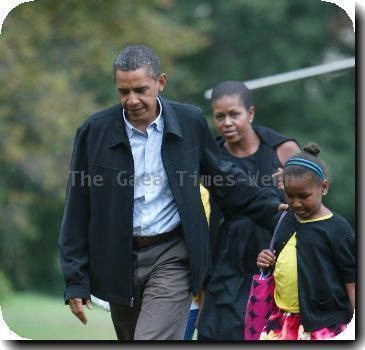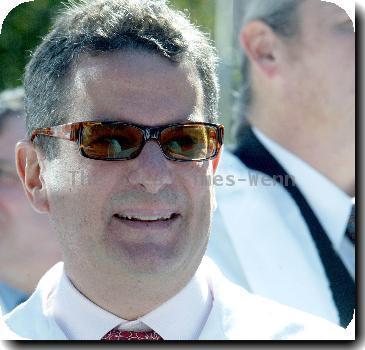Afghan defense official says Obama’s target to swell ranks of Afghan army is too low
By Rahim Faiez, APTuesday, December 1, 2009
Afghan official: US target for Afghan army too low
KABUL — A top Afghan military official said Tuesday that a key part of President Barack Obama’s new war plan — accelerating the training of Afghan soldiers — does not go far enough to meet the country’s defense needs.
Obama plans to dispatch 30,000 U.S. troops to Afghanistan over six months — an accelerated timetable with a built-in endgame — that would have the first fresh Marines on the ground as early as Christmas, a senior administration official told The Associated Press. Obama also will ask NATO allies to contribute 5,000 to 10,000 new troops to the separate international force in Afghanistan, diplomats said.
Obama’s plan emphasizes stepped-up training for Afghan forces, a goal aimed at speeding the handover of the nation’s security to Afghan security forces.
Lt. Gen. William B. Caldwell, the new head of a U.S.-NATO command responsible for training and developing Afghan soldiers and police, said Tuesday that although the groundwork is being laid to expand the Afghan National Army beyond the current target of 134,000 troops by Oct. 31, 2010, no fixed higher target has been set. There is a notional goal of eventually fielding 240,000 soldiers and 160,000 police, but Caldwell said that could change.
“Although that is a goal and where we think it could eventually go to, it’s not a hard, firm, fixed number,” he said in a telephone interview with The Associated Press.
For now, Caldwell’s orders are to reach the targets of 134,000 soldiers and 96,800 police by next October.
Gen. Sher Mohammad Karimi, operational commander of Afghanistan’s defense ministry, said a 134,000-member Afghan National Army is shy of what is needed.
“The 134,000 army, which has been approved so far, it is not enough for our country,” he said. “We have requested to increase that number to at least 240,000.”
He said even during the 1970s, during the reign of King Mohammad Zahir, the ranks of the Afghan army didn’t fall below 200,000 — and the target was for 250,000 troops. “Then, everywhere was peace. There was no fighting,” he said. “Today, with Taliban militants and international terrorists, we even need more troops than during the king’s time.”
President Hamid Karzai learned details of the new U.S. strategy in Afghanistan during an hour-long videoconference call with Obama. A presidential palace spokesman said the two discussed troops levels, security, political and economic elements of his revised war plan on Tuesday morning.
The Afghan president’s office declined to disclose details about their conversation, but a close confidant of Karzai’s, who was with the president following the call, said Karzai was happy with the discussion. The confidant spoke anonymously because it was a private conversation.
More troops would be welcomed by U.S. service members at Forward Operating Base Airborne, located 22 miles (35 kilometers) west of Kabul in Wardak province.
“Sure we want more troops, more help. We’re over-stretched. Many hands make lighter work,” said Staff Sgt. Joel Mabry, of Cullman, Alabama, who is deployed with an engineering battalion from the Alabama National Guard.
He said with more infantry and other combat troops arriving, the work of the engineers would skyrocket. His unit has been moving around U.S. outposts and bases insulating tents, building hot showers and doing other jobs needed to prepare soldiers for the Afghan winter.
Some soldiers, however, wondered whether their deployments will be extended. That’s a rumor spreading around the 2nd Battalion, 287th Infantry Regiment, 10th Mountain Division, which is due to rotate back to the United States within a month.
“I wouldn’t want to speculate (on an extension). It’s pure conjecture. If it happens, the morale is high among the troops. It wouldn’t be a problem for me,” said 1st Lt. Chris Stachura, of Pulaski, Wisconsin, a battalion officer.
This has been the deadliest year of the conflict for U.S. forces, with nearly 300 killed. Casualties started climbing soon after Obama decided to deploy an additional 21,000 U.S. troops as part of his plan to refocus on the Afghan war.
NATO forces have also posted a higher death toll in 2009 than in any previous year, with more than 500 killed. In the latest casualty, a British service member was killed by a bomb Monday, the international military coalition said in a statement.
The top U.N. official in Afghanistan said Obama needs to be careful not to go too far in stressing the need for U.S. troops to find a way out, when some sort of long-term commitment will be essential.
“It would be wrong to talk about an exit strategy. I think we’re talking a transition strategy, which is something completely different,” said Kai Eide. “It really means pushing more and more responsibility onto the Afghan authorities.”
U.N. deputy spokeswoman Marie Okabe said Secretary-General Ban Ki-moon had “been briefed on what’s in the pipeline” regarding Obama’s plan.
Ban told the Women’s International Forum at U.N. headquarters in New York on Tuesday that he will support Obama’s new strategy for Afghanistan. “That will be very, very difficult but necessary strategy,” Ban said.
In the capital Kabul, some Afghans said they were worried the troop increase was too much like an occupation — a scenario particularly worrisome to Afghans who still remember living through an oppressive Soviet regime.
“It is possible to build a country with its own people, not with foreigners,” said Nazir Ahmad, standing outside of a clothing store that he runs.
Bershna Nadery, a middle-aged woman who works for the Afghan Finance Ministry, said she was worried more troops would make life more dangerous for Afghans.
“When they increase the troops, the Taliban will respond by increasing their attacks on the foreigners. But that will not only be against the foreigners, it will be against Afghan civilians who live in the same area,” said Nadery, a woman in a black headscarf, who was shopping on a main street.
Associated Press writers Deb Riechmann in Kabul, Kathy Gannon in Islamabad, Edith M. Lederer at U.N. headquarters, and Jennifer Loven, Anne Gearan and Robert Burns in Washington contributed to this report.
Tags: Afghanistan, As-afghanistan, Asia, Barack Obama, Central Asia, Christmas, Kabul, North America, United States

